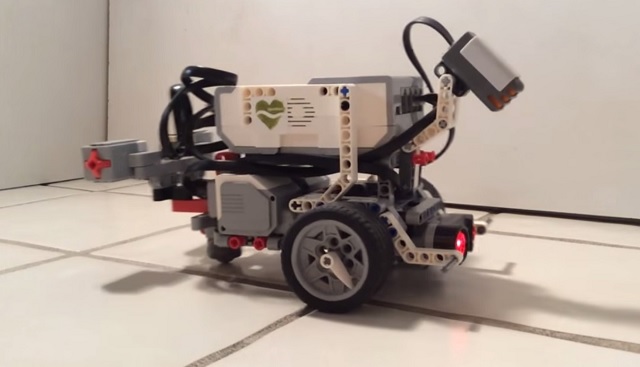Scientists and computer programmers have recreated the brain of a lifeform in robot form by mapping the neural connections of nematode worms, translating that into software and downloading it into a lego robot. They found that the robot behaved in the same way as a real worm, even though no behaviour had been coded.
The OpenWorm project is an open source science project that aims to build a complete, accurate simulation of a lifeform. It has chosen for its subject the nematode worm Caenorhabditis elegans (C. elegans), as the animal is incredibly simple. It has just 1000 cells, of which only 302 are neurons and 7,000 connections or synapses (by comparison the human brain has 86 billion neurons and 100 trillion synapses). In addition, the skin of the worms is transparent making it possible for scientists to track each cell as the animal develops by injecting a dye.
This information gathered over the last few decades has allowed scientists to create a ‘connectome’ for the worm – a detailed map showing how the animal is structured cell by cell. Now that information is being recreated digitally, with the ultimate goal of creating the first wholly independent artificial life form.
The project has yet to recreate the body of the worm, complete with skin and muscle which would allow the digital worm to swim through water just like its biological counterpart, but in recent weeks they have achieved success in creating a digital version of the worm’s brain. When this was transplanted into a lego robot, the worm displayed worm-like behaviours by moving away from stimuli.
Lucy Black, an artificial intelligence specialist reported the experiment on the I Programmer blog, writing “The key point is that there was no programming or learning involved to create the behaviours. The connectome of the worm was mapped and implemented as a software system and the behaviours emerge. It is difficult to understand how it works – but it does.”
Although the worm, when created, is unlikely to have any real practical purpose – it’s too simple to be used as a mobile sensor or probe – it does open doors on the possibility that more complex life forms may also be recreated. The people behind the project are clear that they believe the project may hold the key to one day understanding how the human brain works, thus enabling more effective treatment, or maybe even a cure for diseases such as Parkinson’s and Alzheimer’s.
“Because we believe brain research must accelerate, we are taking matters into our own hands. If we cannot build a computer model of a worm, the most studied organism in all of biology, we don’t stand a chance to understand something as complex as the human brain. We must crawl before we can walk!” they explain on their website.
And it’s not just the worm that has air futuristic air about it. By fully embracing modern open source working practices, the scientists and programmers working on OpenWorm are offering a glimpse into a future when collaboration between like-minded individuals working thousands of miles from each other will be commonplace.
In describing their mission, the founders write “OpenWorm believes that the challenges of solving brain simulation, even for the simplest of model organisms, require open access and collaborative solutions.
“OpenWorm is actively working to achieve its goal – creating the world’s first virtual organism in a computer – by: bringing together highly motivated scientists and engineers in the open space; pushing away all the red tape by taking open science to the extreme; and fostering growth of a completely open computational biology community.”
Independent developers are actively encouraged to run simulations based upon the work already done by existing teams and participants and to make their own modifications, resulting in a situation in which a number of competing models are developed simultaneously. As a result, the best models are harvested to go into the finished product. It is Adam Smith’s invisible hand at work in the field of science.
In more ways than one, this little lego worm offers the merest glimpse of a thrilling future ahead of mankind.

COMMENTS
Please let us know if you're having issues with commenting.